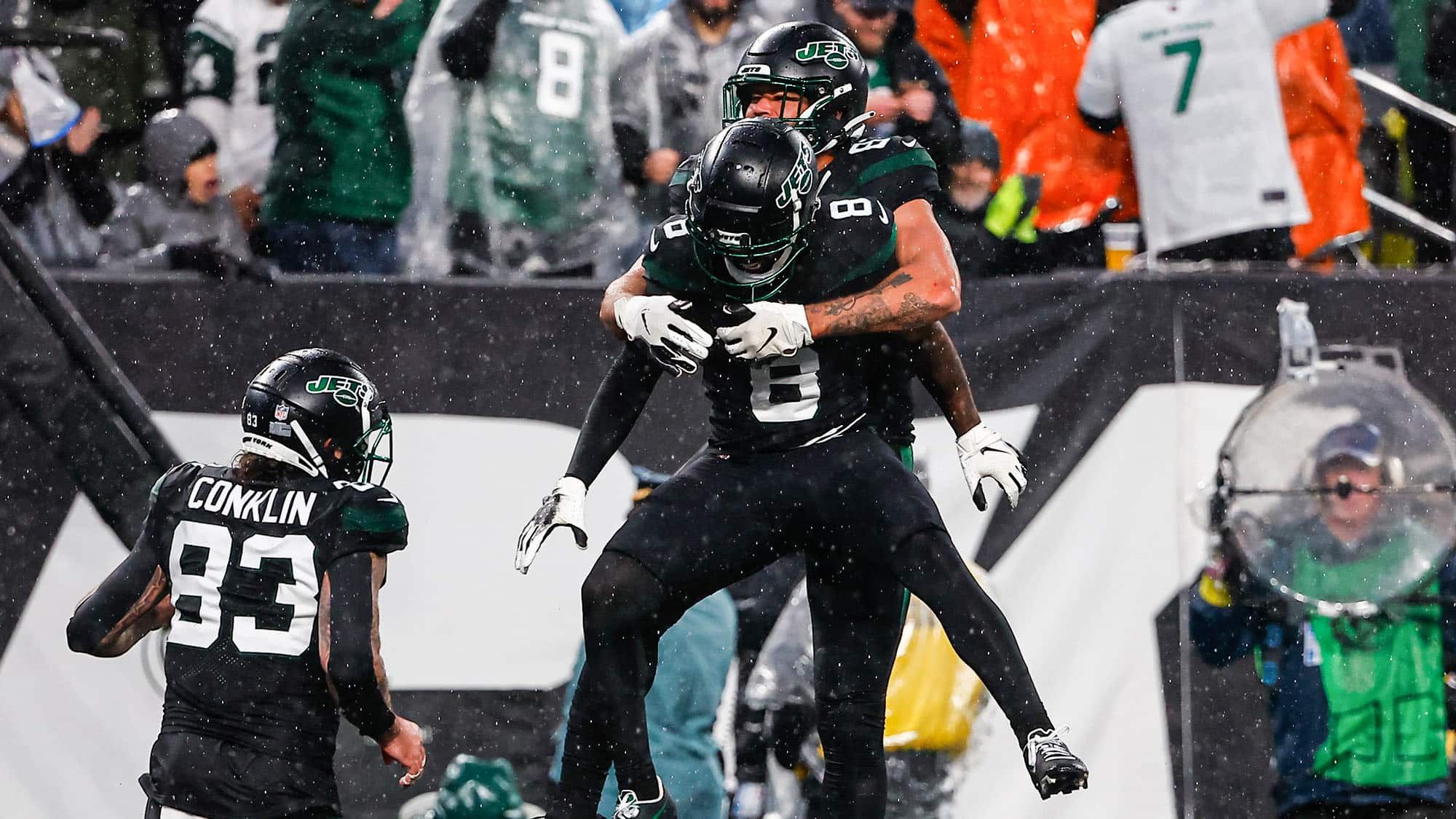New York Jets OC Mike LaFleur went with a new approach in Mike White’s first start, and it paid dividends
The insertion of Mike White at quarterback was, quite clearly, the main reason for the New York Jets‘ offensive explosion against the Chicago Bears. White was cooking all afternoon as New York sliced up Chicago to the tune of 466 yards and 31 points.
But switching to White was not the only significant adjustment for the Jets’ offense.
Offensive coordinator Mike LaFleur made a bold decision in this game. LaFleur opted to drastically increase the team’s usage of “12 personnel” packages (1 RB, 2 TE, 2 WR).
LaFleur relied more heavily on two-tight-end sets against Chicago than he did in any other game this season. The Jets used 12 personnel on a season-high 51% of their offensive plays (31 of 61). That is more than double their previous season average of 23%, and it is 17% higher than their previous season-high of 34% (Week 6 vs. Packers).
This decision worked wonders for the Jets. Their offense fired on all cylinders when utilizing 12 personnel packages.
With 12 personnel on the field, the Jets averaged 8.6 yards per play and had a success rate of 68%. For perspective on how good that is, the Jets offense’s overall season averages in 2022 (regardless of personnel) are 5.3 and 45%, respectively.
*- Success rate: The percentage of plays that result in a positive EPA (Expected Points Added) for the offense.
Tight ends Tyler Conklin and C.J. Uzomah each spent a lot of time on the field. Conklin played 50 snaps (79%) and Uzomah played 48 snaps (77%).
Get Started: Learn More About Becoming A Jet X Member
The duo provided the Jets with useful contributions in a variety of areas. They were reliable targets in the passing game, combining to catch all six of their targets for 67 yards. In pass protection, they did not allow any pressures over a combined total of five pass-blocking snaps. They also carved out holes for the Jets’ playmakers in the open field, providing good blocking both in the screen game and the run game.
I can see why LaFleur decided to make this change for White’s first start. Two-tight-end packages seem like a strong complement to White’s abilities.
As a quarterback who likes to get the ball out quickly and operate in the shallow-to-intermediate ranges of the field, it makes perfect sense that the tight ends would be some of his best friends. So why not get two of them on the field?
Additionally, Conklin and Uzomah’s open-field blocking skills are maximized by the fairly high number of screen passes that the Jets like to call when White is under center.
This philosophy was an interesting development from LaFleur. For much of the season, the Jets have not been quite as 12-heavy as many expected them to be when they went out and signed two free agent tight ends to starter-level contracts. This was the first game of the year in which they utilized the package on the majority of their plays. And, as shown by the numbers, it worked out great.
I am curious to see how LaFleur manages the Jets’ personnel packages over the rest of the season. Will he build on this game and continue to rely heavily on 12 personnel while White is under center?
Most likely, the correct move for LaFleur would be to take things on a game-by-game basis. Sometimes it will be the right move to go with a heavy-12 offense. Sometimes it will be the right move to rely on three-receiver sets.
Adaptability is crucial when it comes to game planning in the NFL. You cannot do the same things every week. Opponents are going to watch your film and build their game plan around taking away what you do best.
The key is to have as many answers as possible. If the opponent focuses on stopping Option A, you must be able to thrive with Option B, and vice versa.
This performance against Chicago is a sign that the Jets are growing into an offense that has answers to whatever defenses throw at them. We’ve seen them have games this year where they were successful while primarily relying on three-receiver sets (they ran 11 personnel on 57% of their plays in a 40-point game against Miami), and now we’ve seen them have a game where they were successful while primarily relying on 12 personnel.
Perhaps next week, the Minnesota Vikings’ defense will increase its usage of heavier personnel packages to counter the frequent usage of 12 personnel they saw the Jets utilize against Chicago. This will give LaFleur a chance to be one step ahead and switch to using more three-receiver sets, giving the Jets a speed advantage on the outside.
Keep an eye on how the Jets use their tight ends going forward.

